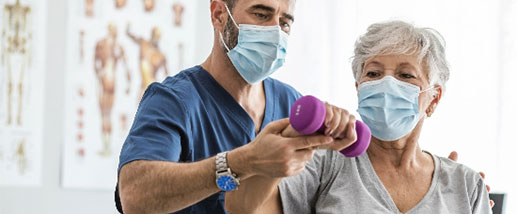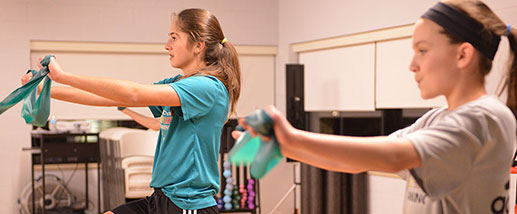Arthroscopic Shoulder Surgery Wins Over Skeptics
March 11, 2018“It’s hard to imagine that only a few short years ago all shoulder repair surgeries were performed with large, wide-open wounds,” said Michael Chrissos, MD, a board-certified orthopedic surgeon with Michigan Orthopedic Center on the campus of St. Joe’s Hospital in Ann Arbor. “The vast of shoulder repairs — some 99 percent — are performed arthroscopically. There is far less pain, blood loss and muscle trauma, and a much smaller scar.”
Recovery is tricky because according to Chrissos, patients feel so good right after surgery they try to do too much too soon. “It’s critical patients understand that the healing process takes time,” he cautions. “But this procedure not only relieves the shoulder pain they were suffering before they came to see me and vastly improves their range of motion, but that takes time.”
For Chrissos, this was a hands-on opportunity to be in on the ground floor of a wide-spread revolution. “At first there was a lot of resistance and plenty of skepticism,” he said, “and there should have been. When something new is introduced, you want to be sure it’s proven; but I knew intuitively that this technique was going to meet—or surpass—the results of open surgery.”
Stretching the boundaries of the technology that was available at the time, he and a colleague actually worked with a local engineer to design a prototype that vastly improved the suturing process. “We designed a special needle that would load, push through and pull back in the tiny little incision,” he said. The patented product was refined and manufactured. Chrissos also worked with companies to design anchors to hold the sutures, eventually settling on an inert plastic that most patients seem to tolerate well.
There’s a misconception between joint replacement and arthroscopic surgery. “It’s important to note that when I’m talking about arthroscopic shoulder surgery, I’m not talking about shoulder joint replacements. I am referring to repairing torn or damaged tendons, ligaments and cartilage,” he said. “Because we insert a camera during surgery we can see 360 degrees, and have a much better view of what we’re doing verses traditional open surgery,” said Dr. Chrissos.
“There’s also less risk of infection and less stiffness.”




